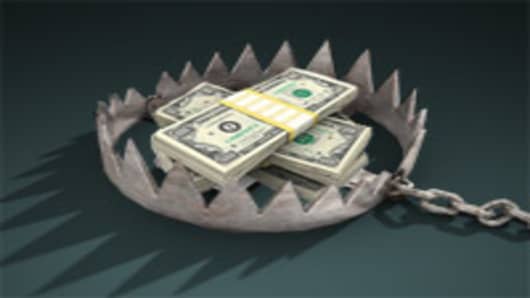Low fees are a big selling point of exchange-traded funds, but beware: They may be higher than they appear, especially in the growing world of ETFs that buy other ETFs instead of the actual stocks, commodities or futures.
Look no further than the newly launched (as in last week) Teucrium Agricultural Fund, better known by its symbol — the TAGS . The fund invests equally in Teucrium’s corn, soybean, wheat and sugar funds.
According to Teucrium’s website, the TAGS has an expense ratio of 0.32 percent.
However, a deeper dive into the prospectus:
Each Underlying Fund pays management fees at an annual rate of 1.00 percent of its average net assets, brokerage charges, over-the-counter spreads and various other expenses of its ongoing operations (e.g., fees of the Administrator, Trustee and Distributor). Accordingly, the Fund has a total estimated expense ratio, including its proportionate share of Underlying Fund expenses, of approximately 1.6 percent of net assets (not including the transaction fees paid by Authorized Purchaser when purchasing or redeeming Creation Baskets).
Translation: In addition to the 0.32 percent expense, the fund also pays a portion of the expenses for each of the four funds it holds. That amounts to a total expense of 1.6 percent. Mel Herman, president of XTF.com, a research firm, says his analysis shows the total expense is closer to 1.7 percent, suggesting “hidden costs” of around 1.4 percent — more than double any ETF fund of funds.
Either way, “Your returns will be reduced by the sum of your pro-rata share of each underlying funds’ expenses plus the 32 basis points of the TAGS expense,” says Sal Gilbertie, president and chief investment officer of Teucrium Trading.
So, why not just buy the individual funds and avoid the .32 percent expense? It’s possible, unless you want to own an equal amount of each, which would require continuous trading.
“That could easily cost an investor as much, or more than the 32 basis points of charge that make up the total expense ratio,” Gilbertie says. “That said, if an investor were ambivalent to the rebalancing then there I no need to buy TAGS; instead one could simply purchase the underlying four funds directly and save the 32 basis points.”
Bottom line: Even with an ETF, it pays to read (at least scan!) the fine print in the prospectus. And when doing it, Gilbertie adds, make sure you know benchmark the ETF tracks. My guess is that most investors don’t do either. After all, unlike a company, where the focus is usually the numbers, an ETF is an investment in multiple companies or, in the case of the TAGS, multiple funds. It’s the ultimate leap of faith investment.
Questions? Comments? Write to HerbOnTheStreet@cnbc.com
Follow Herb on Twitter: @herbgreenberg
Find Herb on Google+



